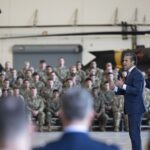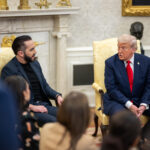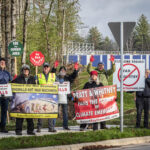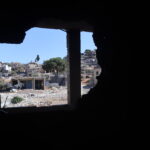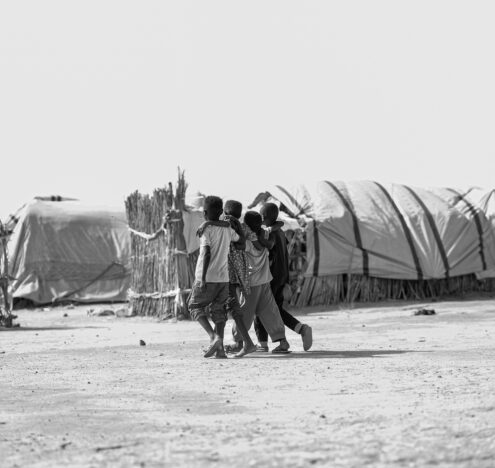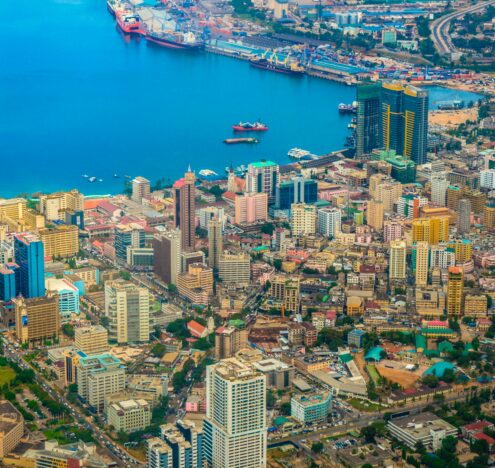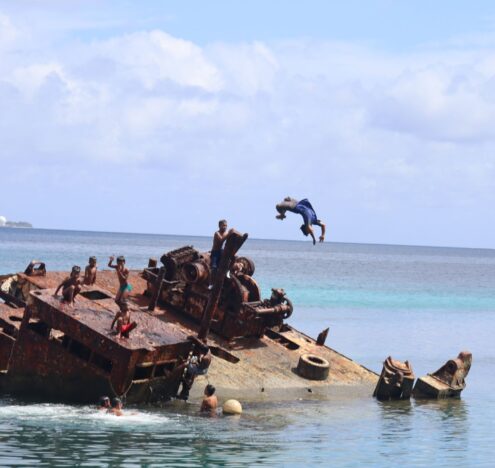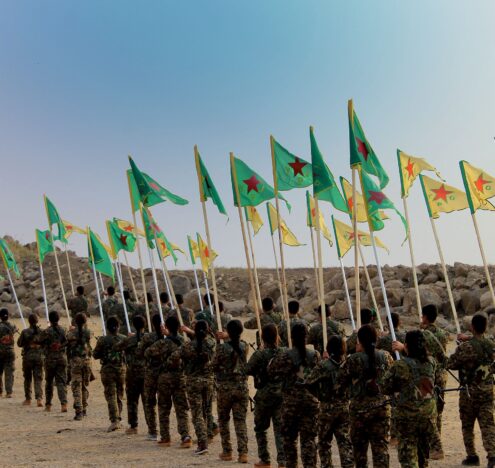United Nations peacekeepers are the largest deployed force in conflict zones worldwide. But they cut remarkably different figures than other military actors — vivid against their terrain, wearing baby blue helmets to highlight their multilateral allegiance, driving bright white vehicles to draw attention to their presence in a country, they’re explicitly styled as doves in landscapes dotted with hawks. Yet peacekeepers today dress for a role they may soon play less and less.
The UN is perennially asked to manage more conflict with persistently insufficient means, placing it at a perpetual impasse. Today, this impasse pits proponents who argue that peace operations must more closely resemble traditional military operations — to have more means to use force or to work alongside states explicitly to uphold their sovereignty — against those who emphasize that mediation, ceasefire monitoring, and implementing peace accords should headline the UN’s work. In other words, should peacekeepers be soldiers, meeting threats against the state with force, as the growing number of UN-hatted counterterrorism missions do? Or should they function as lightly-armed diplomats, acting only in accordance with traditional principles the UN itself lays out: consent of the warring parties, impartiality, and the non-use of force, except in self-defense or in defense of the mission’s mandate?
The lure of peacekeeping forces backed by real military power comes from a clearly understandable position: if peacekeepers are on the ground to protect civilians, they should be given the means to do so; if they’re there to force an end to hostilities, they ought to be able to do that effectively, too. But this isn’t all peacekeepers today are asked to do. Instead, in its largest, most complex recent operations, the UN has invoked the language of stabilization, counterterrorism, and counterinsurgency, and given discrete parts of UN missions authorization to actively confront armed actors. No large traditional missions have been established since 2014; several larger missions have since closed; there are more military collaborations with coalitions of the willing; and — largely as the result of Chinese pressure — some human rights components of mission mandates have met the axe. Meanwhile, peace operations have shrunk worldwide, and budgetary pressures — fueled in part by the US’s unwillingness to foot its UN bill — place peacekeeping in a constant state of insecurity. The UN’s unique logistical capability in places like the Sahel, for example, makes it an attractive partner for military actors. But a stronger force posture from the UN raises complicated questions about the UN’s neutrality and moral legitimacy — particularly since peace operations rest on the consent of the host country, and peacekeepers are reluctant to challenge the host country’s authority, even where the host country victimizes civilians.
Today’s missions in the Central African Republic, Mali, and the Democratic Republic of the Congo all employ one dimension or another of a more military model, engaging in offensive action that’s hard to reconcile with peacekeeping’s traditional principles, and that’s largely happening without a clear underlying doctrine or set of principles. As a result, we’re left with fundamental questions about today’s peace operations: Does the UN’s turn toward counterterrorism in the Central African Republic and Mali make peacekeepers less effective using other, less coercive tools elsewhere? Does the UN’s offensive military unit in the Democratic Republic of the Congo, designed to apprehend a rebel group challenging the Democratic Republic of the Congo’s government, leave rebel groups elsewhere less willing to sit down with the UN in brokered peace talks?
Transforming peacekeeping into an offensive military endeavor or another tool for upholding the primacy of the state above all else threatens the entire enterprise, undermining its legitimacy as a multilateral conflict resolution tool while potentially placing civilians — who already bear the brunt of civil war violence — in even more peril.
These debates may sound remote and marginal to big questions of war and peace, but they’re not. While peacekeeping may be rarely central to today’s foreign policy or international security debates, the fates of desperate people the world over are tied to peace operations’ success. With 12 missions staffed by over 87,000 personnel from 121 countries, peacekeepers are the international actors most likely to be on hand where people are experiencing violence, displacement, and violations during war. And although debates about the crisis of the liberal international order never address peace operations, a specifically liberal paradigm has historically underwritten the UN’s peacebuilding and statebuilding efforts. The debate highlights a tension that runs through the entire UN system — is the UN a compact between powerful states, there to uphold the sovereign authority of each state, or is it a system of treaties and agreements that protect the rights of people within those states? That question is particularly acute when the UN sends its emissaries out into the world with weapons. A mode of intervention that focuses on the rights of states, with explicitly less emphasis on human rights and representation, has real repercussions for people’s rights in conflict zones worldwide.
In most ways we can measure, peacekeeping is an effective tool: peacekeepers are good at helping combatants uphold peace agreements; good at making post-conflict peace last longer; good at making wars less deadly; good at keeping conflicts from spilling over borders; and good at mediating conflict and providing local financial inducements for peace. Peacekeepers are also essential in protecting civilians. Every complex mission authorized since 1999 has an explicit mandate to protect civilians under imminent threat of violence — but peacekeepers are better at protecting civilians from rebels than they are at protecting them from government forces. This last point is important when we consider what direction future peacekeeping missions should take. Transforming peacekeeping into an offensive military endeavor or another tool for upholding the primacy of the state above all else threatens the entire enterprise, undermining its legitimacy as a multilateral conflict resolution tool while potentially placing civilians — who already bear the brunt of civil war violence — in even more peril.
Critically, force isn’t peacekeepers’ central tool, and security isn’t necessarily what warring parties want from the UN. Peacekeeping’s core principles frame it as a diplomatic, not a military, endeavor — a way for the international community to support conflict resolution. And beyond peacekeeping, the UN’s various agencies and diplomats resettle refugees, help build or rebuild infrastructure and institutions, and provide humanitarian assistance; its presence also signals to other donors that they, too, can send aid. In my forthcoming book, I argue UN peace operations shape the conduct of civil wars globally, but that we can’t — and shouldn’t — understand peace operations as solely a solution to a state security problem. Combatants sometimes don’t want peace and prefer ineffective peacekeepers. They sometimes seek international involvement to solve tactical, material, and political problems that have little to do with peace. Both the UN Security Council, which authorizes peace operations, and the UN Secretariat, which plans them, can and should center those tasks, as well — and they should worry that these tasks may become harder if peace operations lean more deeply into the logic of counterinsurgency and counterterrorism.
Peacekeepers can help protect people from violence while helping peacemakers resolve conflicts, or they can help states engage in counterterrorism and stabilization operations that bolster state sovereignty — but doing both by helping the state crack down on terrorists and insurgents may make it difficult for peacekeepers to use their diplomatic tools at all. And if peace operations are to protect people and not just states, they must remain primarily a diplomatic and humanitarian tool — not a set of missions resembling military, counterinsurgency, and counterterrorism operations, as today’s newer complex missions do. Turning toward state stabilization, counterinsurgency, and counterterrorism threatens the entire peacemaking endeavor, potentially undermining the UN’s ability to leverage the diplomatic and aid tools many parties to conflict value most. If peacekeepers increasingly undertake counterinsurgency or counterterrorism work, then they aren’t doves among hawks — they act primarily in service of the state, with troubling downstream consequences for people worldwide who live in fear of state violence.
Anjali Kaushlesh Dayal is an assistant professor of international politics at Fordham University. She is the author of the forthcoming Incredible Commitments: How UN Peacekeeping Failures Shape Peace Processes (Cambridge University Press).



